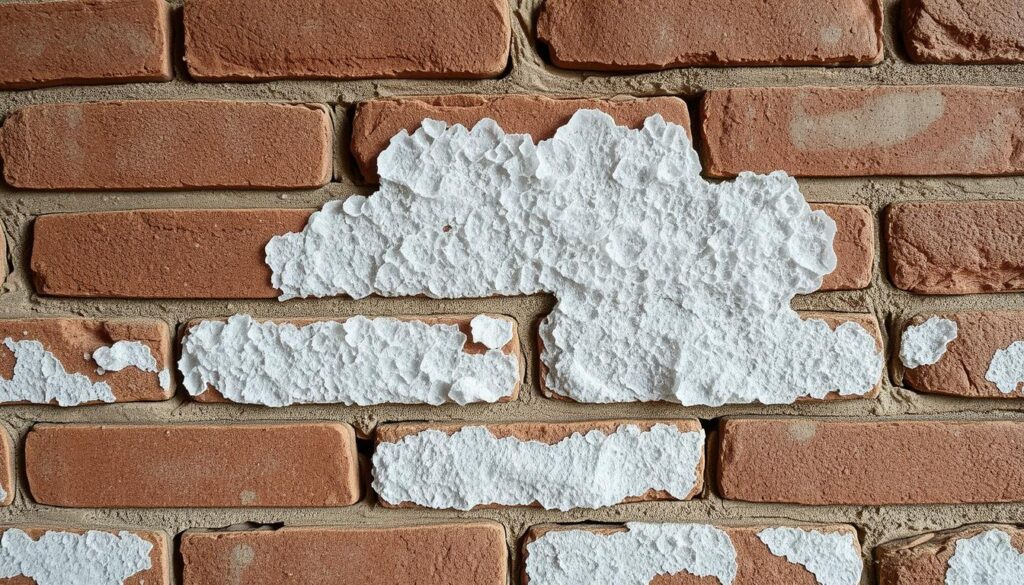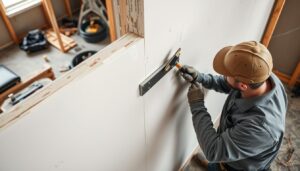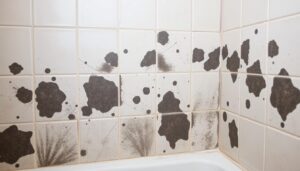Have you ever noticed a white, powdery substance forming on your brick walls? This phenomenon, known as efflorescence, can be both aesthetically displeasing and a sign of underlying moisture problems. Efflorescence occurs when water carries salts to the surface of porous materials like brick or masonry, where it evaporates, leaving behind unsightly deposits.
Understanding the cause of efflorescence is crucial to addressing the issue. It’s not just a cosmetic problem; it can indicate water ingress or other masonry issues that need attention. In this guide, we’ll walk you through the steps to identify, assess, and remove efflorescence from your brick walls, as well as provide tips on prevention.
Key Takeaways
- Identify the causes of efflorescence on your brick walls.
- Assess the extent of the efflorescence and underlying moisture issues.
- Learn effective methods for removing efflorescence.
- Discover preventive measures to minimise future salt deposits.
- Understand when to seek professional help for persistent problems.
Understanding Efflorescence on Brick Surfaces
Understanding the phenomenon of efflorescence on brick surfaces is crucial to addressing the issue effectively. Efflorescence is a common problem that affects the appearance of brick walls, but to tackle it, one must first comprehend its underlying causes.
What Is Efflorescence?
Efflorescence refers to the white, powdery deposit that appears on brick surfaces due to the presence of salts. It occurs when water containing salts is drawn to the surface of the brick, where the water evaporates, leaving behind salt deposits.
The process involves the migration of salt-laden water through the brick material, ultimately resulting in the visible efflorescence.
Why Efflorescence Occurs on Brick Walls
Efflorescence occurs on brick walls due to a combination of factors, primarily involving moisture, salts, and a pathway for the salt solution to reach the surface. The porous nature of brick and mortar allows water to penetrate, dissolving salt compounds within the building materials.
| Causes of Efflorescence | Description |
|---|---|
| Moisture | Water entering the brick wall through various sources, including rainfall and ground water. |
| Salts | Presence of salts within the brick material, which are dissolved by water and carried to the surface. |
| Pathway for Salt Solution | The porous nature of brick and mortar, allowing the salt-laden water to migrate to the surface. |
By understanding these factors, you can better address the issue of efflorescence on your brick walls.
Identifying Efflorescence on Your Brick Walls
To address efflorescence effectively, you need to be able to identify it correctly on your brick walls. Efflorescence is a common issue that affects many brick structures, but it can be confused with other problems.
Common Signs and Appearance
Efflorescence typically appears as a white, powdery deposit on the surface of brick walls. It is caused by the migration of salt to the surface, which then crystallizes as it dries. You may notice that the appearance is uniform across the affected area, which is a characteristic sign of efflorescence. The extent of the efflorescence can vary, ranging from minor patches to widespread coverage.
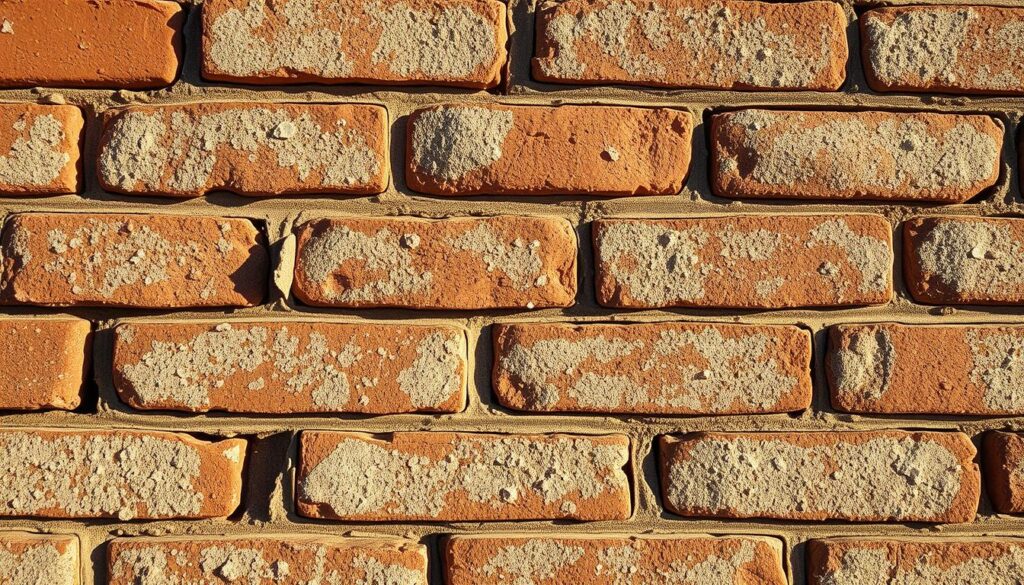
Distinguishing Efflorescence from Other Brick Problems
Distinguishing efflorescence from other stains or deposits is crucial for effective treatment. Unlike mould or mildew, efflorescence doesn’t have a musty odour and won’t grow or spread over time. A simple test to identify efflorescence is to apply water to the affected area; if it darkens temporarily, it’s likely efflorescence. In contrast, deposits like calcium deposits are denser and form below the brick’s surface, making them more challenging to remove.
By understanding these differences, you can accurately diagnose the problem and choose the appropriate solution.
Assessing the Severity of Efflorescence
Assessing the severity of efflorescence on your brick walls is crucial to determine the necessary course of action. The extent of efflorescence can significantly impact the structural integrity of your building, making it essential to evaluate the condition accurately.
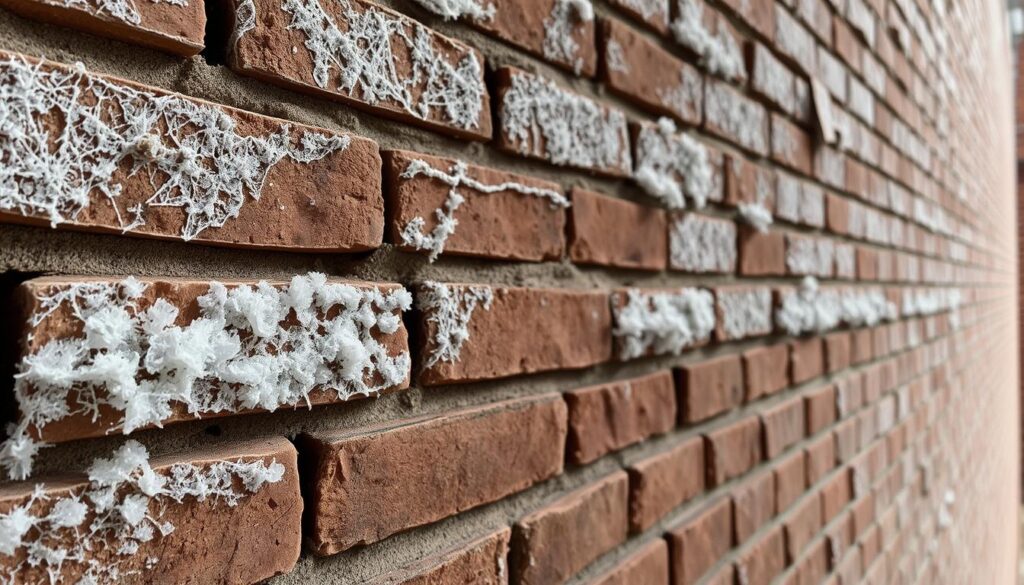
Light vs. Heavy Efflorescence Cases
Efflorescence can range from a light, superficial issue to a heavy, pervasive problem. Light cases may be addressed with simple removal techniques, whereas heavy cases may require more extensive measures to rectify the underlying moisture issues. Understanding the severity helps you choose the appropriate solution.
In cases of recurring efflorescence, it is vital to investigate the root cause of the problem. Persistent efflorescence may indicate ongoing water intrusion that needs to be addressed to prevent damage to the structure.
When to Be Concerned About Underlying Issues
You should be concerned about underlying issues when efflorescence is accompanied by other signs of deterioration, such as crumbling mortar or spalling brick. These indicators may signal potentially serious structural concerns that require professional assessment. Additionally, efflorescence on interior walls can be particularly concerning, as it may indicate significant moisture penetration through the building envelope.
- Recurring efflorescence that returns quickly after removal may indicate persistent moisture problems.
- When efflorescence appears alongside other issues, it may signal potentially serious structural concerns.
- Subflorescence can lead to brick deterioration through spalling and cracking, especially in regions with freeze-thaw cycles.
How to Remove Efflorescence from Brick Effectively
To effectively remove efflorescence from brick, you need to understand the cause and choose appropriate cleaning methods. Efflorescence is a common issue that arises from salt deposits on the surface, often due to moisture penetration. Selecting the right removal technique is crucial to avoid damaging the brick or mortar.
Dry Brushing Technique
For light cases of efflorescence, a simple dry brushing technique can be effective. Use a stiff brush designed for brick cleaning to gently sweep away the salt deposits. This method is non-invasive and prevents moisture from being introduced, which could exacerbate the issue.
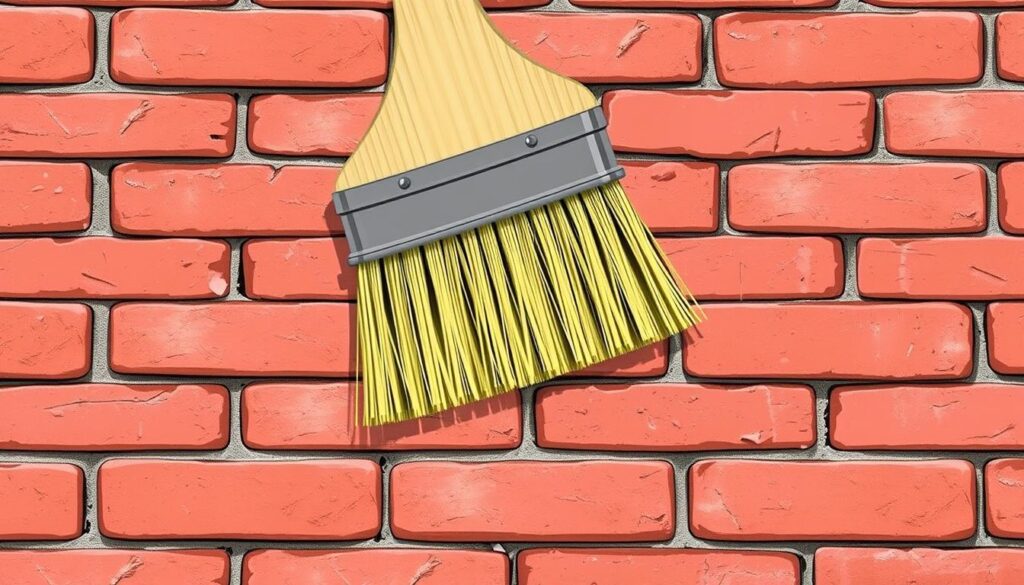
Water Rinsing Approach
Rinsing the affected area with clean water can help dissolve and remove salt deposits. Use a gentle stream of water to avoid damaging the mortar or forcing water into the brick. This method is most effective for recent or light efflorescence cases.
Vinegar Solution Treatment
A vinegar solution can be used to remove efflorescence. Mix white vinegar with water, and apply it to the affected area. The acid in the vinegar helps dissolve the salt deposits. However, be cautious not to use too harsh a solution, which could damage the brick or mortar.
Commercial Efflorescence Removers
For more stubborn cases, commercial efflorescence removers are available. Products like PROSOCO’s Sure Klean Light Duty Concrete Cleaner and GK EFF OFF are specifically designed to dissolve salt deposits without damaging brick surfaces. Always follow the manufacturer’s instructions and test on a small area first.
When using commercial removers, ensure you follow safety precautions, including wearing protective gloves and eyewear. After application, thoroughly rinse the wall with clean water to remove any chemical residues.
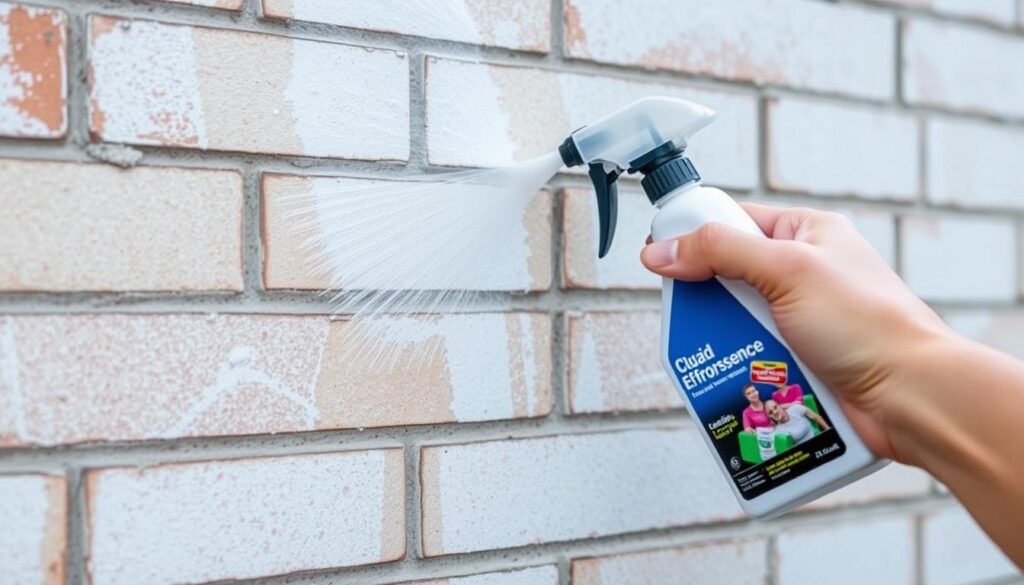
Preventing Future Efflorescence on Brick Surfaces
Preventing efflorescence on brick surfaces requires a multi-faceted approach that addresses the root causes. By understanding the factors that contribute to efflorescence, you can take proactive steps to prevent it.
For more information on removing efflorescence, you can visit our page on brick efflorescence removal and prevention tips.
Moisture Control Strategies
Controlling moisture is crucial in preventing efflorescent salts from forming on brick surfaces. To achieve this, ensure that your building materials are stored off the ground and covered with waterproof sheeting to prevent water absorption.
Proper construction techniques, including fully filled mortar joints and adequate curing time, can significantly reduce the potential for efflorescence formation.
Proper Sealing Techniques
Sealing your brick surfaces can help prevent efflorescence by reducing water penetration. Consider applying a breathable water repellent to your brick surfaces every 5-10 years as part of your regular maintenance routine.
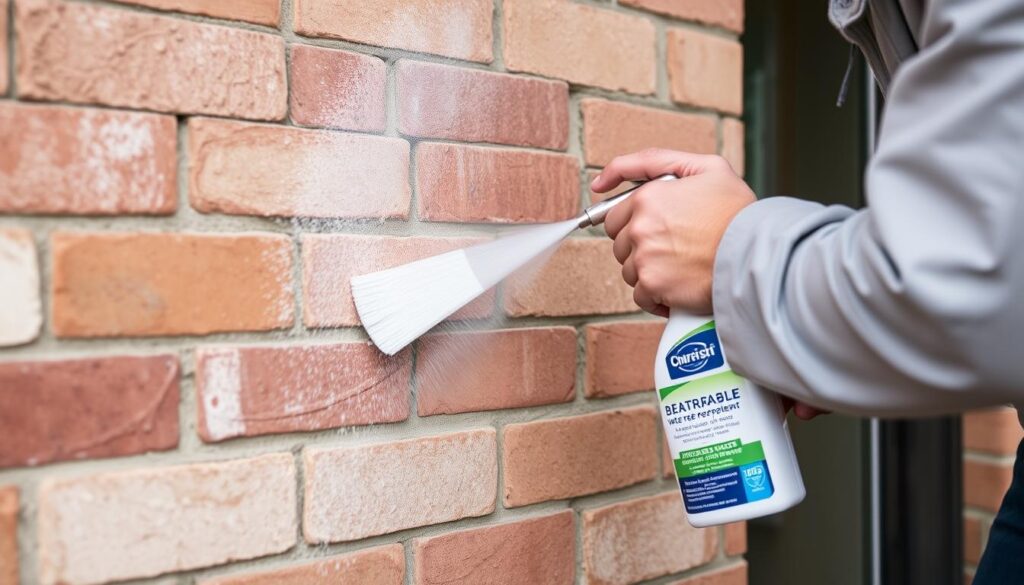
When selecting a brick sealer for efflorescence prevention, choose a product that is compatible with your brick type and follow the manufacturer’s instructions.
Maintenance Practices to Minimise Salt Deposits
Regular inspection and maintenance of your brick walls can identify and address moisture issues before they lead to significant efflorescence problems. Ensure that your gutters, downspouts, and flashing are functioning correctly to direct water away from masonry surfaces.
By adopting these strategies, you can minimise salt deposits and prevent efflorescence on your brick surfaces.
Conclusion
To maintain the integrity and appearance of your brick masonry, it’s crucial to address efflorescence promptly. By understanding the causes of efflorescence and following the removal methods outlined, you can effectively restore your brick walls. Using a product like GK EFF OFF efflorescence remover can help dissolve stubborn salt deposits. Prevention is key; implementing proper moisture control strategies and maintenance practices is essential to protect your home‘s structural integrity.
Regular inspections, particularly after wet weather conditions, allow for early detection and treatment of efflorescence. For persistent issues, consulting a masonry professional may be necessary. With the right approach to removal and prevention, you can maintain your brick walls’ aesthetic appeal and structural integrity over time, ensuring your home remains safe and visually appealing.
